How To Pan Fry Fresh Rainbow Trout Filets On Top of the Stove
Pan-frying fresh trout is one of the simplest and most flavorful ways to enjoy this delicate, lean fish. With its light flavor and tender texture, trout doesn’t require a complicated cooking method; a quick pan-fry beautifully brings out its natural qualities.
This method also offers a fantastic way to achieve crispy, golden skin, making each bite a satisfying blend of texture and taste. Whether you’re cooking freshly caught trout or using a fillet from the market, pan-frying requires only a few ingredients and basic techniques, making it accessible for both novice and experienced home cooks.
In this post, I’ll guide you through the essentials of pan-frying trout to perfection. From seasoning tips that enhance its mild flavor to timing the sear just right, you’ll learn how to achieve that ideal flaky texture while keeping the fish moist and flavorful.
I’ll also share tips on choosing the best oil, preventing the fish from sticking, and easy additions like fresh herbs or a squeeze of lemon that can take your dish to the next level. So grab your skillet and make the most of this fantastic fish!
With a few tips on achieving the perfect sear and selecting the best ingredients, you’ll have a restaurant-quality dish that impresses without the fuss. Served with a side of roasted vegetables, a light salad, or creamy mashed potatoes, this trout recipe brings a delightful balance of flavors and textures to the table. Keep reading to discover how to prepare and cook this classic dish to perfection!
How To Cook Rainbow Trout Filets
Ingredients
- 6 filets trout
- salt & pepper to taste
- 6 tablespoons olive oil
- 2 tablespoons fresh tarragon minced
Instructions
- Prep the ingredients by washing and drying the fresh tarragon leaves and removing the leaves from the stems. Discard the stems. Finely mince the fresh tarragon.
- Rinse and dry the rainbow trout.
- Heat up a large frying pan over medium heat, one that will hold at least 2 of the trout fillets. How hot? This is important because you must be careful when adding oil or any fat to a heated pan.
- While the pan is heating, season the skin side of the trout with salt and pepper.
- When the pan is hot enough, add a tablespoon or two of oil to the pan and move the pan around so the oil coats the bottom. When the oil gets hot but not smoking, add the trout fillets skin side down.
- While the trout is cooking, season the non-skin side with salt, pepper and some of the tarragon. Depending on the thickness of the fillets, cook for approximately 3 - 4 minutes until the skin is crispy.
- Flip the trout fillets over and cook for 2 - 3 minutes or until the fish is perfectly cooked through. Transfer the cooked trout to a plate, loosely cover with foil to keep warm while you cook the remaining fillets.I like to bring the pan back to the stove, add a little oil if needed and let the pan and oil get hot again before adding the next pair of trout fillets. If the pan isn't hot, the skin will not crisp up as nicely as the first batch.
- When all the rainbow trout fillets are pan fried, plate with your side dishes and serve.
Cooking Tips
| Cooking Tip | Description |
|---|---|
| Remove from Refrigerator Early | Take trout out 15–20 minutes before cooking to bring it closer to room temperature. |
| Use the Hottest Part of the Pan | Place the thicker section of the trout over the hottest area of the pan for even cooking. |
| Start Skin Side Down | Place trout skin-side down first to achieve crispy, flavorful skin. |
| Don’t Crowd the Pan | Cook in batches if needed; overcrowding lowers pan temperature and causes steaming. |
| When to Flip | Flip once the skin releases easily and crisps—usually after 3–4 minutes. |
| Cooking Times | Total cook time is about 6–8 minutes depending on thickness; fish should flake easily. |
| Use Fresh Herbs | Add fresh herbs like thyme, parsley, or dill near the end or in the cooking fat for aroma. |
| Pat Dry Before Cooking | Dry trout with paper towels to remove moisture and help skin crisp. |
| Season Just Before Cooking | Salt trout right before cooking to avoid drawing out moisture. |
| Use Nonstick or Cast Iron Pan | Use pans that prevent sticking and tearing for delicate fish. |
| Add a Splash of Acid | Finish with lemon juice or vinegar to brighten the flavor. |
| Don’t Overflip | Flip trout only once to keep skin intact and get a good sear. |
| Control Heat | Start medium-high to crisp skin, then reduce heat if outside cooks too fast. |
| Baste with Butter | Add butter near the end and spoon melted butter over trout for richness and flavor. |
What Temperature Should You Cook It To?
Rainbow trout should be cooked to an internal temperature of 63°C (145°F). This temperature is high enough to ensure that any harmful bacteria in the fish have been destroyed but not so high that the meat becomes dry and tough.
To check the internal temperature, insert a meat thermometer into the thickest part of the fish, away from bones and cartilage. When cooking rainbow trout, it is essential to avoid overcooking as this can lead to dry, tough meat.
Alternative Seasoning Ideas
| Seasoning Combo | Why It Works Well |
|---|---|
| Lemon, garlic, and parsley | Bright, fresh flavors balance the richness of the trout and enhance its natural sweetness. |
| Dill, lemon zest, and butter | Dill’s grassy, delicate flavor complements trout perfectly; butter adds richness, while lemon zest keeps it light. |
| Thyme and shallots | Earthy thyme and sweet, caramelized shallots add depth and aromatic warmth to the fish. |
| Paprika, cayenne, and lemon | A touch of heat from cayenne and smoky paprika livens up the trout, while lemon cuts the richness. |
| Tarragon and white wine | Tarragon’s subtle licorice notes pair beautifully with buttery trout and a splash of white wine brightens the dish. |
| Rosemary and garlic | Hearty rosemary and savory garlic bring a rustic, woodsy flavor to balance the tender trout. |
| Coriander and lime | Toasted ground coriander seeds and fresh lime juice create an exotic, citrusy brightness perfect for fish. |
| Chili flakes and honey glaze | Sweet and spicy contrast enhances the mild flavor of trout and caramelizes beautifully when pan-fried. |
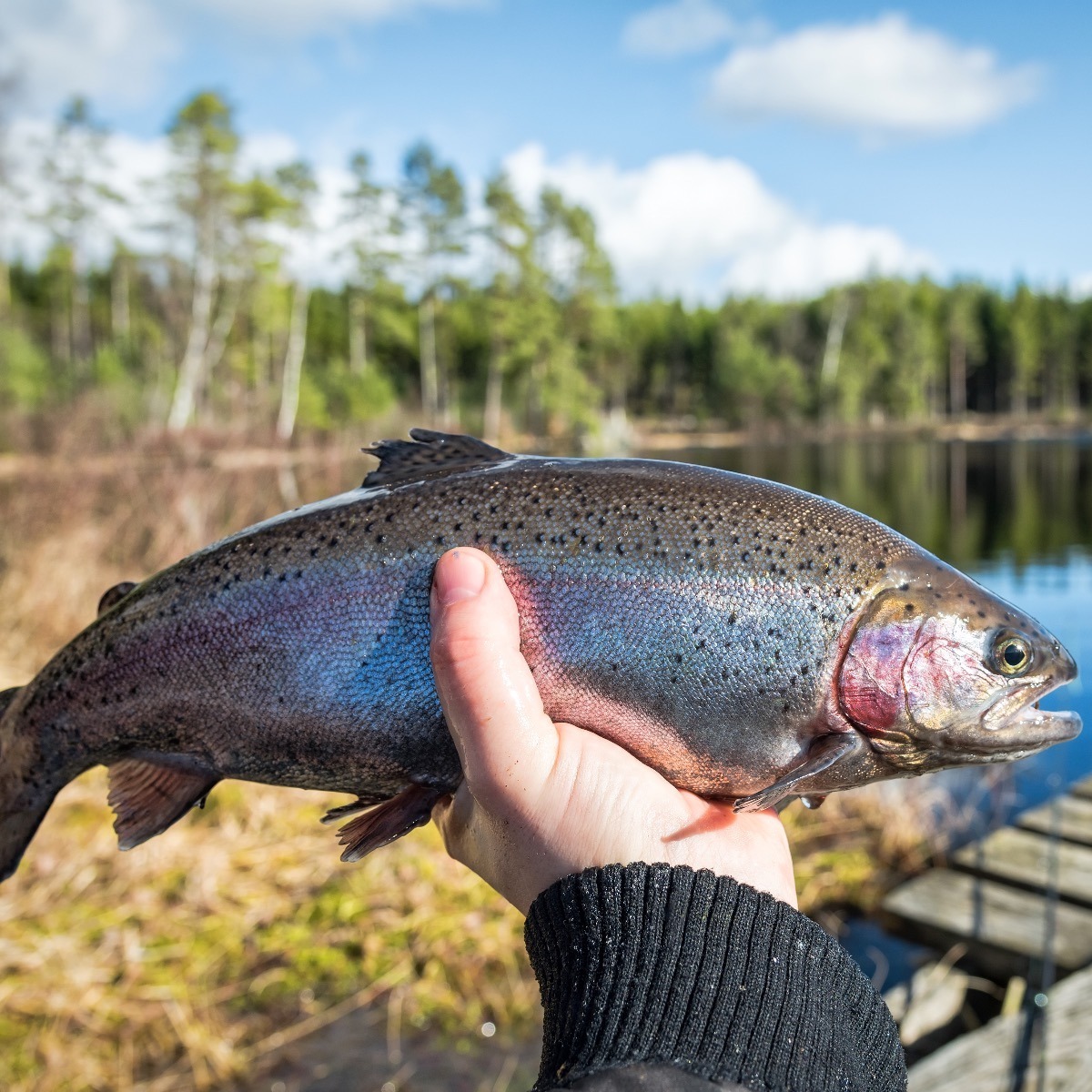
A Little Bit About Rainbow Trout
Rainbow trout, scientifically known as Oncorhynchus mykiss, is a freshwater fish species native to North America and the Pacific Ocean region of Asia. Renowned for its vibrant colors, delicate flavor, and versatility, rainbow trout is popular among anglers and seafood enthusiasts.
One of the most distinctive features of rainbow trout is its striking appearance. As its name suggests, rainbow trout often displays a spectrum of colors ranging from olive green to blue-gray on its back, with a silvery-white underside. Along its sides, you may find a band of pink, red, or orange hues, which intensify during the spawning season, lending the fish its characteristic rainbow-like appearance.
In addition to its visual appeal, rainbow trout is prized for its mild and delicate flavor, which is slightly sweet and nutty. Its flesh is tender yet firm, making it suitable for various cooking methods, including grilling, baking, broiling, poaching, and smoking. The versatility of rainbow trout makes it a favorite ingredient in a wide range of dishes, from simple pan-seared fillets to elaborate seafood platters.
Due to its popularity and availability, rainbow trout can be found in various forms, including fresh, frozen, and smoked. Whether enjoyed as a simple grilled fillet or incorporated into a gourmet seafood dish, rainbow trout delights the palate with its delicate flavor and provides a nutritious addition to any meal.
Trout FAQ
How Big Do Trout Get?
The size and weight of rainbow trout can vary greatly depending on various factors such as age, habitat, and genetics. In the wild, rainbow trout typically grow to lengths of 8-12 inches (20-30 cm) and weigh between 1-4 pounds (0.5-2 kg). However, larger specimens can be caught, especially in specific habitats.
In aquaculture, rainbow trout are often selectively bred to reach larger sizes, with some farmed fish reaching weights of up to 13 pounds (6 kg) or more. The size and weight of rainbow trout can also be influenced by the availability of food and the length of the growing season in their habitat.
Nutritional Values
Trout offers an excellent source of lean protein and delivers a wealth of nutritional benefits. When you enjoy a serving of trout, you take in a high amount of omega-3 fatty acids, which support heart health and reduce inflammation. Trout also provides important vitamins such as B12, niacin, and vitamin D, all of which help maintain energy levels and promote healthy bones.
A typical 3-ounce portion of cooked trout contains about 120–150 calories, 20–22 grams of protein, and very little saturated fat. It’s low in carbohydrates and naturally gluten-free, making it a great choice for a wide range of diets. You’ll also get essential minerals like selenium, potassium, and phosphorus, which help support immune function, muscle health, and overall metabolism.
Because trout is lighter and milder than some other fish, it offers an easy way to incorporate heart-healthy fish into your meals without overwhelming flavors. When pan-fried, baked, grilled, or steamed with fresh herbs and a touch of lemon, trout gives you a flavorful, nutrient-packed option you can feel good about serving.
Where to Shop for Rainbow Trout
Rainbow trout can be purchased from a variety of sources, including:
- Grocery stores: Rainbow trout are often sold fresh or frozen in the seafood section of large grocery stores.
- Fish markets: Independent fish markets specializing in selling various fresh and saltwater fish, including rainbow trout.
- Online retailers: Online retailers specializing in seafood offer rainbow trout for delivery to your door.
- Aquaculture farms: Some fish farms raise rainbow trout and sell it to consumers.
The availability of rainbow trout may vary depending on where you live and the time of year, so it may be a good idea to call ahead to ensure the store or market has it in stock.
6 Interesting Facts
- They are named for their distinctive coloration, ranging from deep green to bright pink, with a band of iridescent red, blue, and purple along their sides.
- They are native to cold-water tributaries of the Pacific Ocean in Asia and North America. Still, they have been introduced to other parts of the world for sport fishing and aquaculture.
- They are highly adaptable and can tolerate a wide range of water temperatures and conditions, making them one of the most widely introduced species of fish in the world.
- They are opportunistic feeders, feeding on various aquatic insects, crustaceans, and small fish.
- They are an important species for sport fishing, with many anglers targeting them for their fighting spirit and delicious flavor.
- They are also a popular species for aquaculture, with farms worldwide producing millions of pounds of rainbow trout for food each year. In addition to being a valuable food source, rainbow trout aquaculture also provides important habitats for other aquatic species and can help restore degraded watersheds.
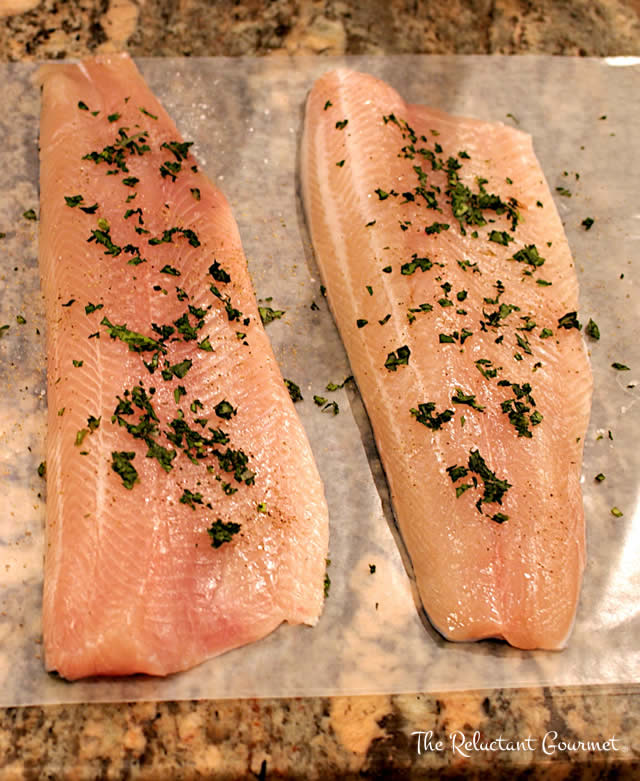
Other Ways to Cook Rainbow Trout
Rainbow trout can be cooked in various ways, each method highlighting its delicate flavor and tender texture. Some popular methods of cooking rainbow trout include:
| Cooking Method | Description |
|---|---|
| Grilling | Cooking trout over direct heat on a grill adds a smoky flavor and crispy skin. Best done on a clean, oiled grill grate to prevent sticking. Cook 4–6 minutes per side depending on thickness. |
| Baking | Baking trout in the oven allows gentle, even cooking. Place whole or fillets on a baking sheet or in a dish, season, and bake at 375°F for about 15–20 minutes until flaky. |
| Broiling | Broiling cooks trout quickly under high, direct heat from above. It creates a nicely browned, slightly crispy exterior. Place trout on a broiler pan about 4–6 inches from the heat source for 5–8 minutes. |
| Steaming | Steaming preserves moisture and delicate flavor by cooking trout with hot steam. Use a steamer basket over simmering water for 6–10 minutes until the fish flakes easily. |
| Sous Vide | Cooking trout sous vide involves sealing it in a vacuum bag and cooking it precisely in a water bath (typically 120–130°F) for 30–45 minutes. This method yields perfectly tender, evenly cooked fish. |
These are some of the most common cooking methods for rainbow trout, but the fish can also be used in various recipes, including soups, stews, and curries.
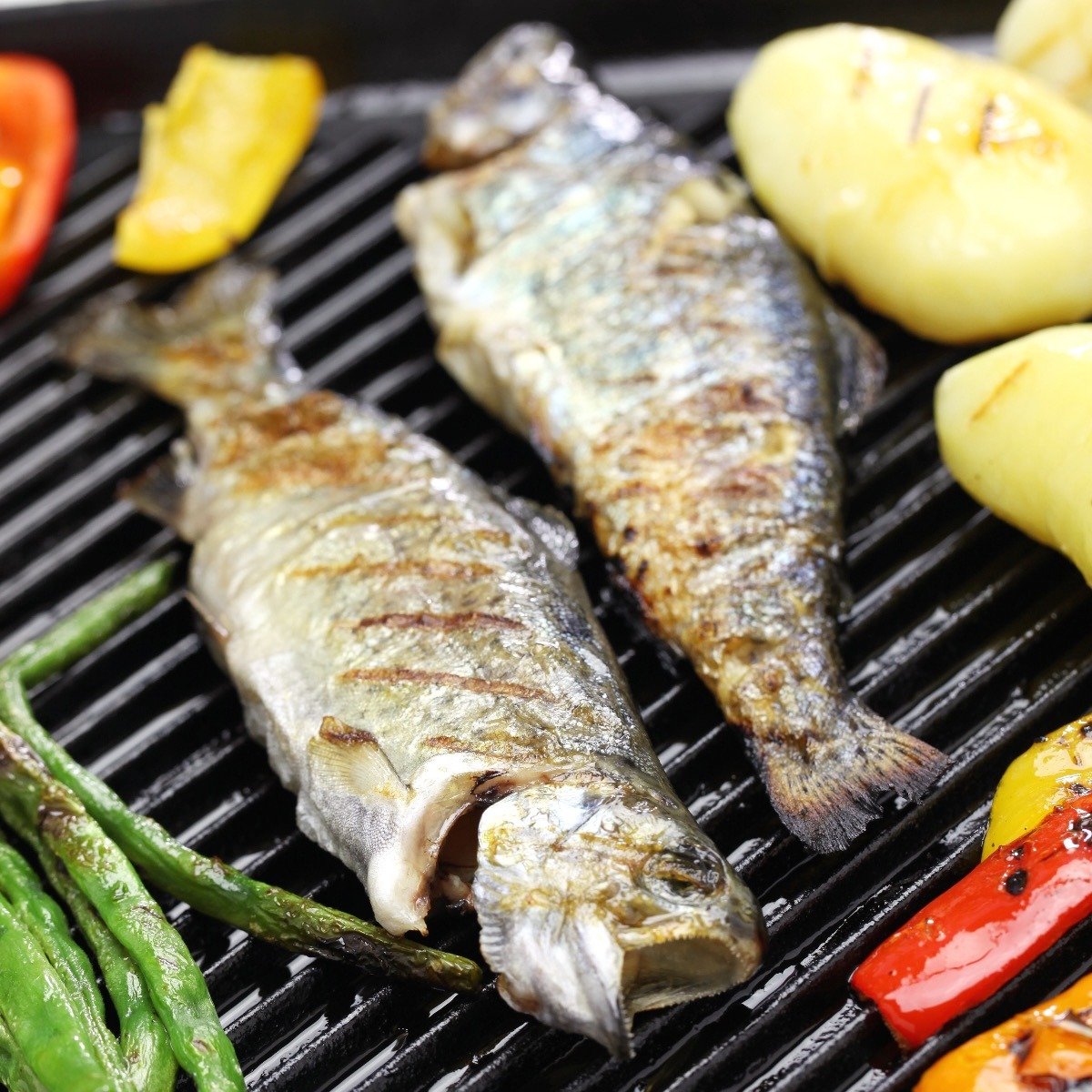
Some Popular Recipes Featuring Rainbow Trout
These are just a few examples of the many delicious recipes that feature rainbow trout as an ingredient. The mild, delicate flavor and tender texture of rainbow trout make it a versatile and popular choice for many types of cuisine.
| Recipe Name | Description | Wine Pairing |
|---|---|---|
| Lemon Herb Grilled Trout | Fresh trout grilled with lemon, garlic, and herbs for a bright, zesty flavor. | Sauvignon Blanc or Pinot Grigio |
| Pan-Seared Trout with Almonds | Crispy skin trout pan-seared and topped with toasted almonds and brown butter sauce. | Chardonnay (unoaked or lightly oaked) |
| Baked Trout with Garlic and Rosemary | Whole trout baked with fresh garlic, rosemary, and olive oil, tender and aromatic. | Pinot Noir or Grüner Veltliner |
| Trout Meunière | Classic French preparation: trout dredged in flour, pan-fried, and served with lemon-butter sauce. | Chardonnay or dry Riesling |
| Smoked Rainbow Trout Spread | Smoky, creamy spread made with flaked smoked trout, cream cheese, and herbs—great as appetizer. | Sparkling Wine or Dry Rosé |
| Trout with Mustard Cream Sauce | Pan-cooked trout served with a tangy mustard cream sauce for richness. | Viognier or Chenin Blanc |
| Trout Tacos with Cilantro Lime Slaw | Lightly seasoned trout fillets in soft tortillas topped with fresh slaw and lime. | Albariño or Verdejo |

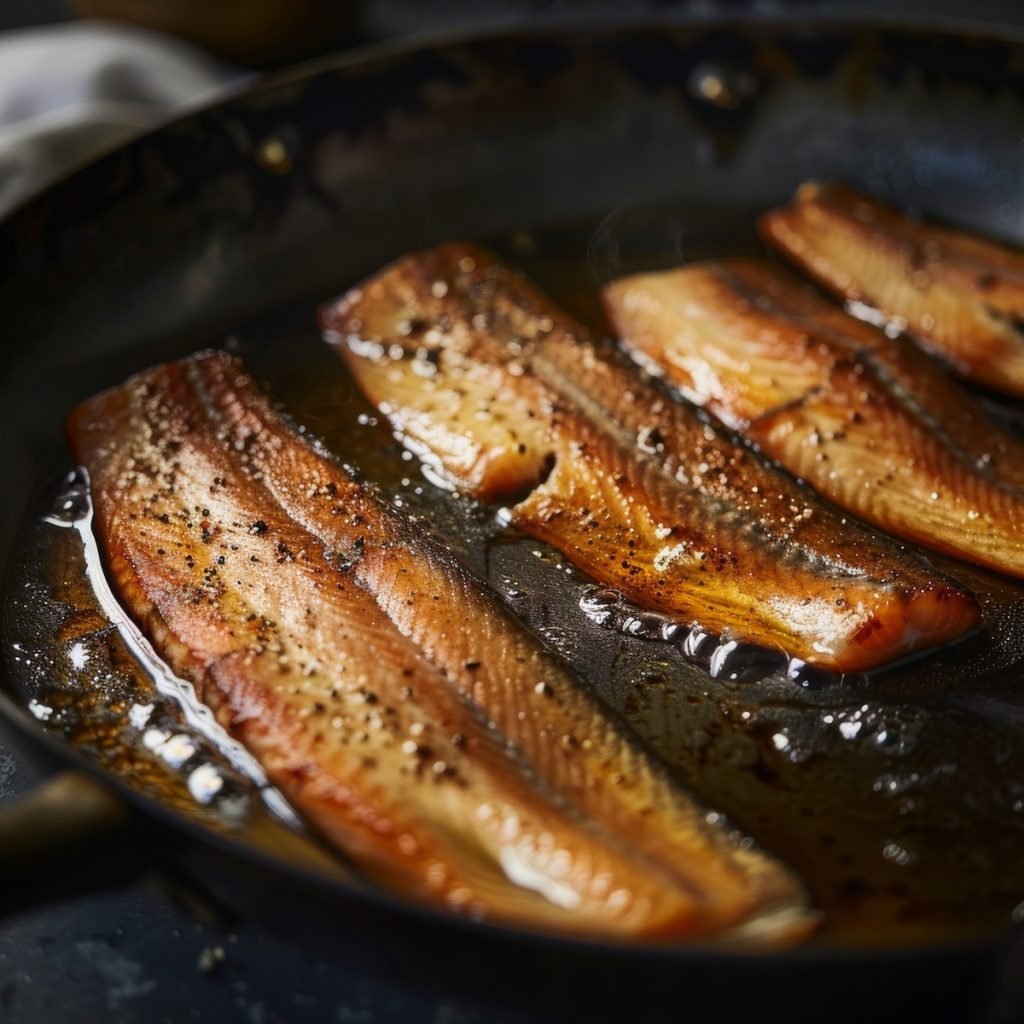
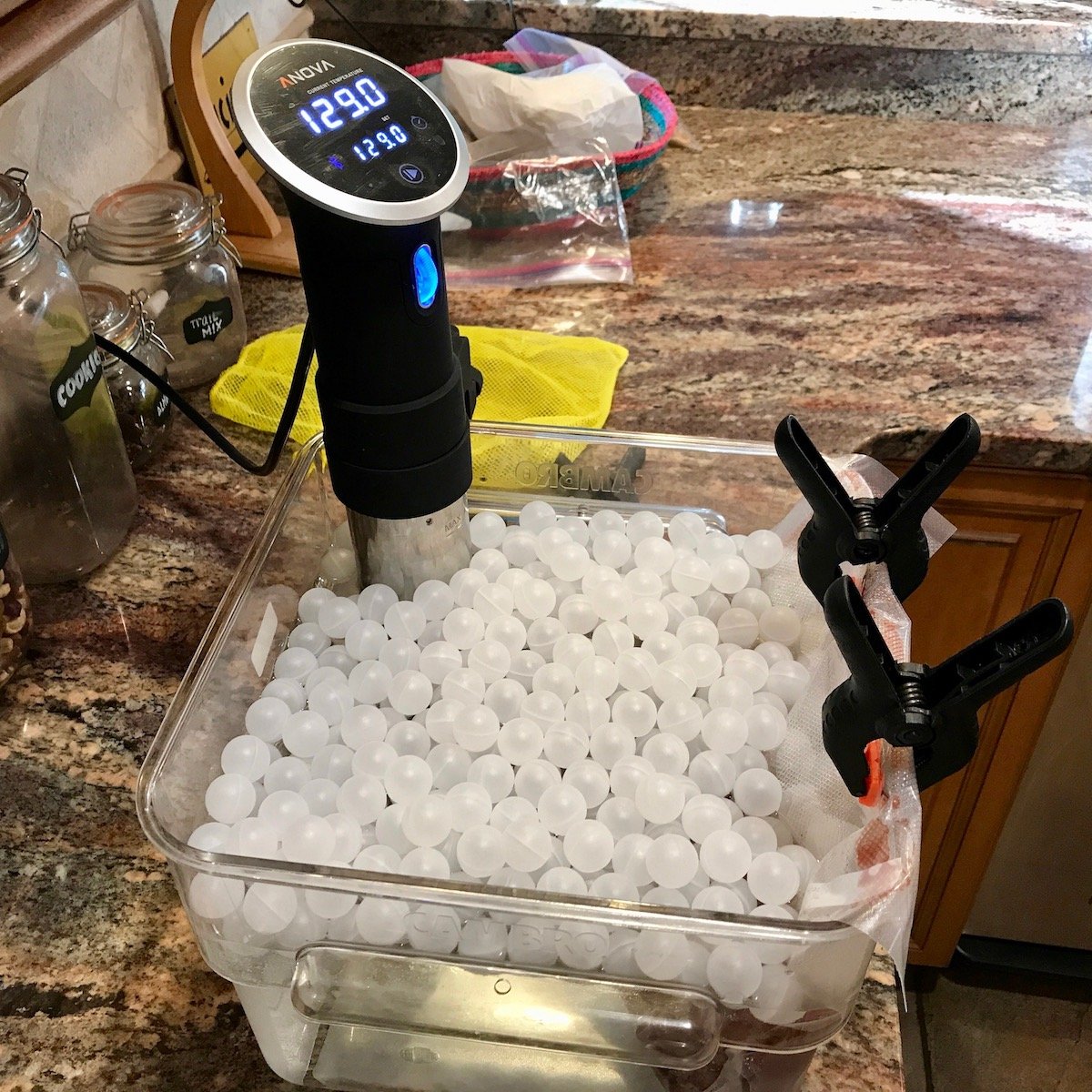
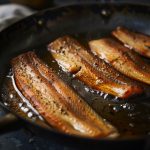
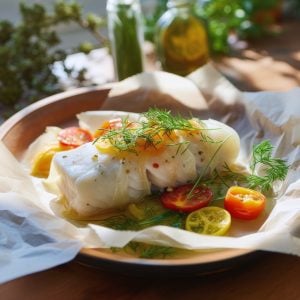
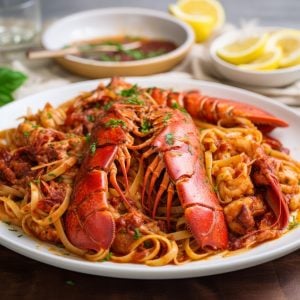

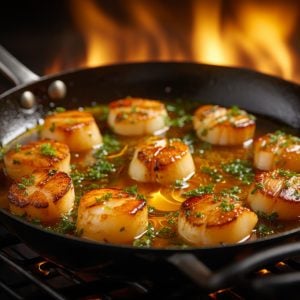

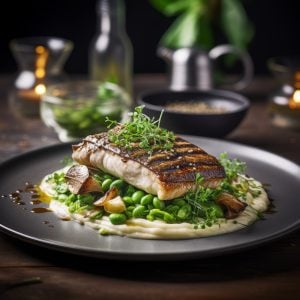
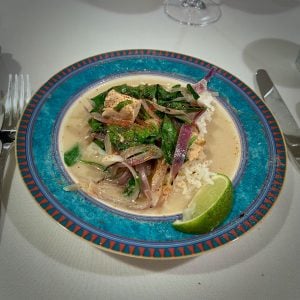
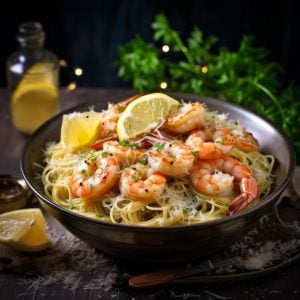


5 Responses
Tried it sans tarragon went with garlic powder and it was magnificent. Who knew….other than you.
Thank you very much
My Dad used to fish on Sunday mornings and always pan fried the brook trout in our cast iron frying pan using butter. I tried your recipe and it was truly amazing. I have to admit that after I flipped the fillets and the second side was almost done, I added about a tablespoon of butter to it. I think if I had used the cast iron rather than my non-stick pan, it would have come out better as well. But it was absolutely delish!
Thanks for letting me know.
I love the way you describe things. Cooking is a joy, but instructions like yours take out the guess work and make things run smoothly.
Thanks
Hi Robert, thank you for your kind words. Much appreciated.